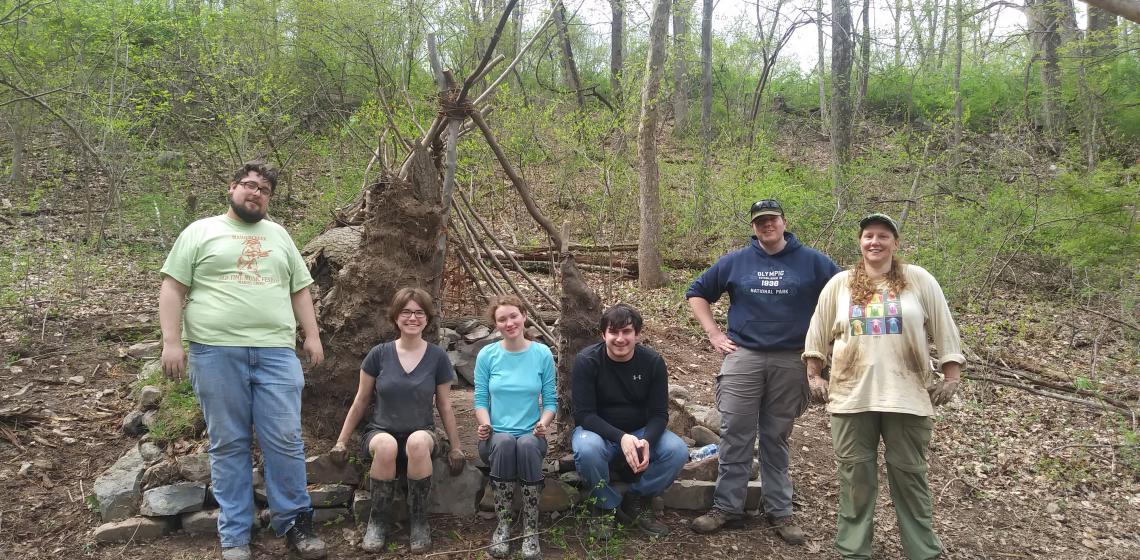
We were founded on a revolutionary idea - that learning should be eye opening, heart racing, game changing and--most important--fun. When John Amos Comenius, a Moravian bishop, came up with that little theory all the way back in the 1600s, he probably didn't expect to have such a big impact. Turns out, we still agree with his philosophy. And we believe our students, like Comenius, can be a little revolutionary. They, too, can turn something seemingly small into something amazing, unimaginable, and bigger than themselves.
Moravian traces its origin to a girls' school founded in May 1742 by sixteen-year-old Countess Benigna von Zinzendorf. Benigna von Zinzendorf's school was the first girls' boarding school in America. It gained such a distinguished reputation that George Washington, during his second term as president of the United States, personally petitioned the headmaster for the admission of two of his great-nieces. The Bethlehem Female Seminary, as the school became known, was chartered to grant baccalaureate degrees in 1863, and in 1913 became Moravian Seminary and College for Women.
A boys' school was established in Bethlehem in July 1742, and another in nearby Nazareth in 1743. These schools merged in 1759 to form Nazareth Hall, an institution which survived until 1929. In 1807 a men's college and theological seminary was established as an extension of Nazareth Hall. That institution, Moravian College and Theological Seminary, moved to Bethlehem in 1858 and was chartered to grant baccalaureate degrees in 1863, the same year as the women's college.
In 1954, after two centuries of separate development and growth, the women's and the men's institutions were combined to form a single coeducational college.
History at Moravian
The past—yours, ours, the world's—holds both some of life's greatest mysteries as well as answers (or at least clues) to the most puzzling of problems. Our program in history acquaints you with the nature of historical inquiry and the antiquity and variety of human experience. Instead of relying solely on factual narratives, you'll focus on the analysis of primary sources, understanding history as a contested field of interpretations, and the skills of producing histories. The history major prepares you to enter careers and graduate study in a variety of fields, including teaching and research, education, museums and historical restoration, library work, journalism, business, law and public service.
Experimental Archaeology in Course(s)
Hist 290: Introduction to Experimental Archaeology.
Chances are that this is the first time you’ve encountered a history course with a lab section! Although housed in the history department, this course will stray across academic boundaries to use methods and sources from anthropology, archaeology, art, geography, botany, geology, chemistry, and more. Part of our work this semester will involve defining what experimental archaeology is and what is should be.
What we’ll be doing in this course is both theoretical (e.g., what do different scholars think about experimental archaeology? What are its best practices? What does it tell us about the present?) and practical (e.g., how do you make tools from stone or bone? Or pottery in a bonfire? Why didn’t medieval peasants knit their sweaters instead of weaving them? What was the most effective kind of shelter for local Native Americans?) We’ll think about how the world is and was, but also about how it might have been different had societies made different decisions about technologies. So you’ll be participating not just in discussion, but also in a hands-on way, using the scientific method to better understand how people in the past obtained subsistence and to better understand the role of technology in our modern lives.
We’ll have a survey of materials used by peoples of the past; we will both read about and conduct our own experiments relating to stone, ceramics, wood, bone, and fibers. We’ll also consider how scholars have used experiments to create indices against which to compare archaeological findings, such as series of stone tools used for cutting different materials or for different lengths of time. In the second half of the semester, we’ll embark on an experiment of our own: making a house best suited to the conditions and materials available at the Deputy Center. As a class, we’ll research and decide on the best type of structure, and as a class we will build it. We’ll end the semester reflecting on both our failures and our successes.
